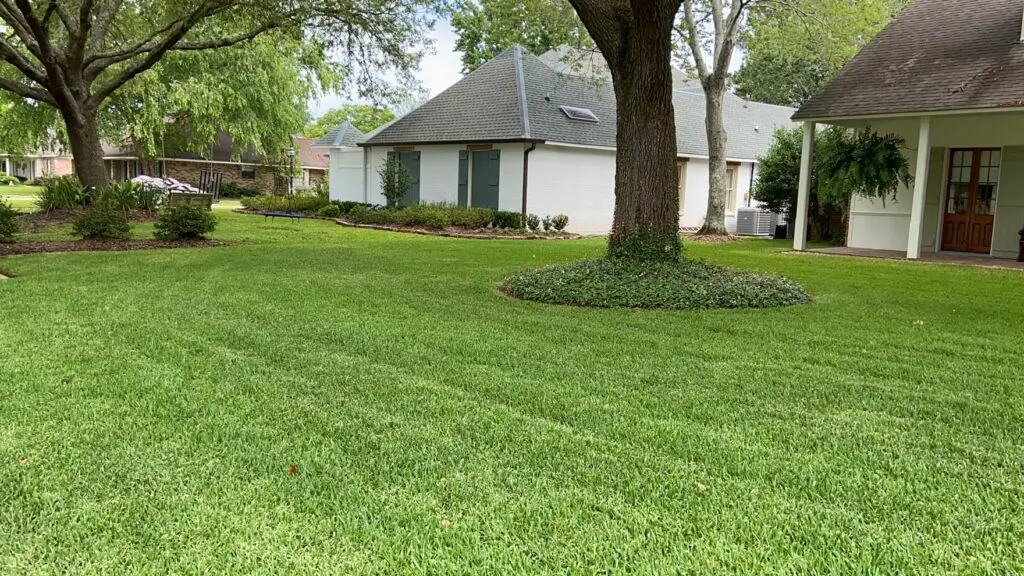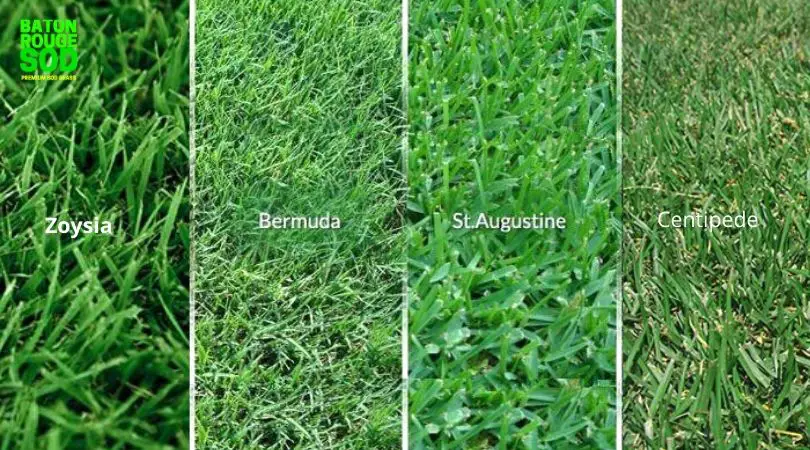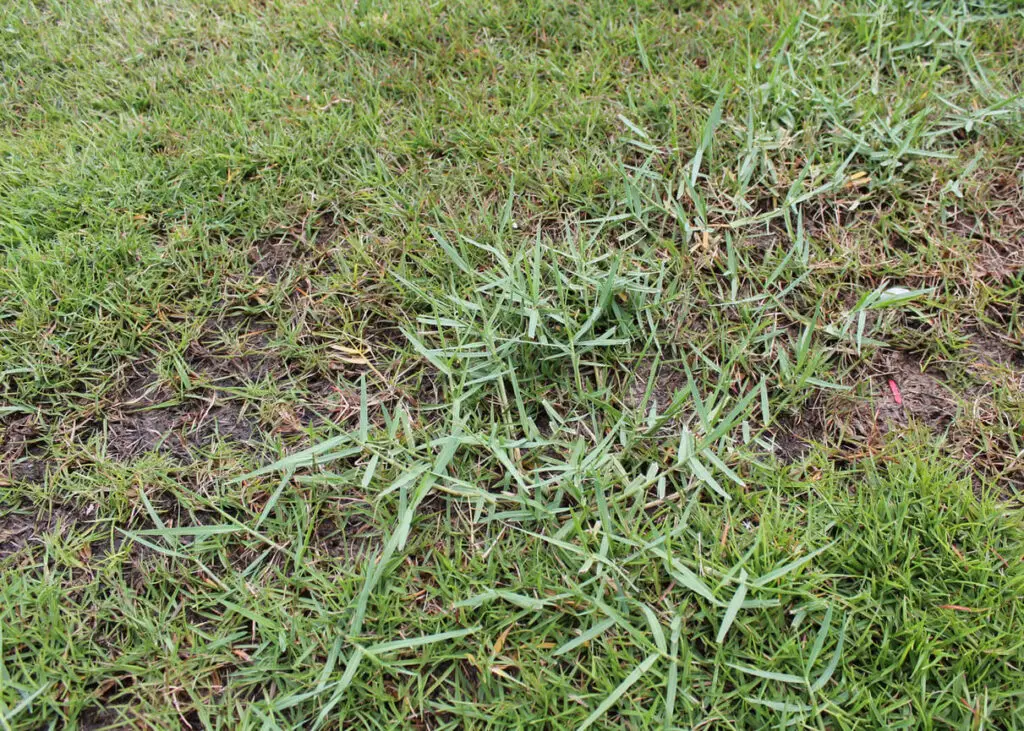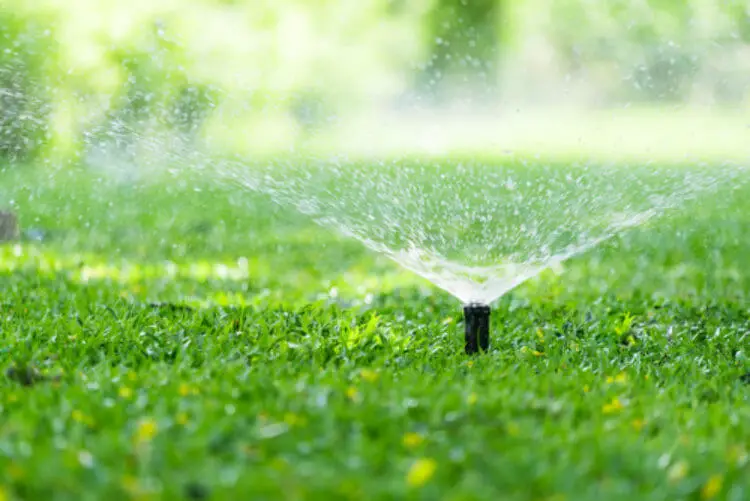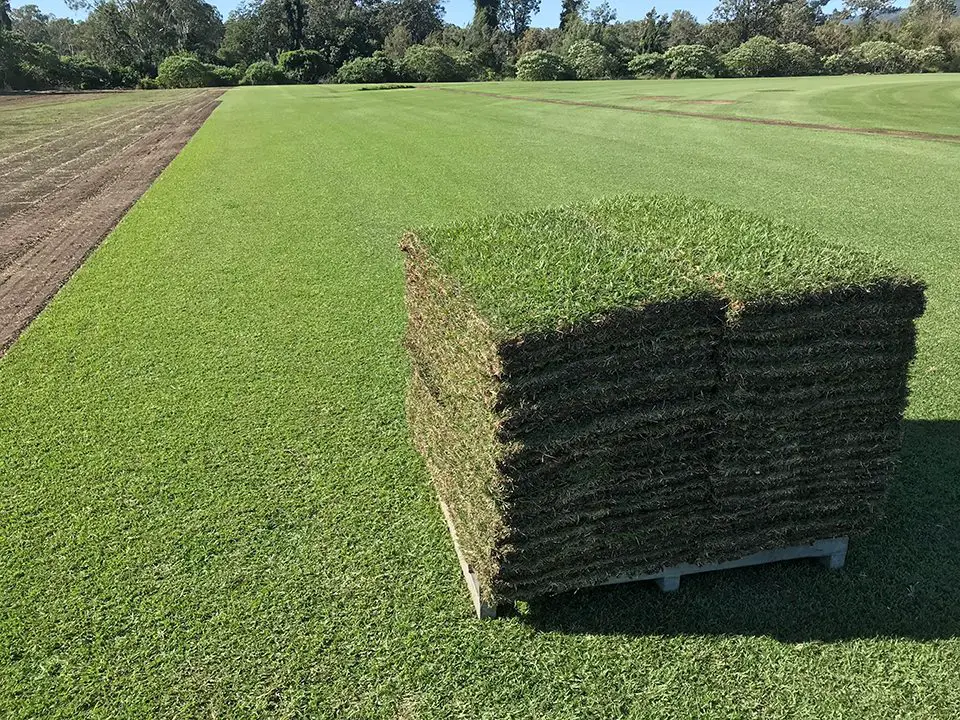One of the most common landscaping questions is the best grass for shade and shaded areas.
The answer is not as simple as it may seem.
There are multiple things to consider when making a decision.
Turfgrass is one of the most adaptable plants and can grow in low-light conditions with a little extra care.
Growing grass in shady areas of your property can be very challenging, especially when you want to have a luscious, green lawn .
There are many types of turfgrass, and each type has different requirements for sunlight, water, and climate.
Most lawn grasses need four to six hours of direct sunlight each day to grow well.
However, certain species of turfgrass can thrive with reduced light.
When you’re trying to get your turfgrass to grow in an area that doesn’t get a lot of sunlight, there are some things to consider like grass type and climate.
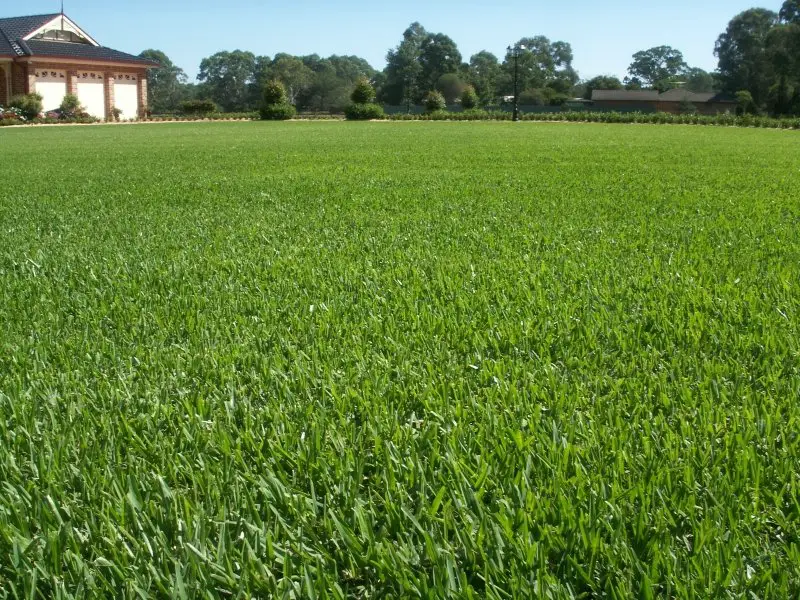
How Much Sun Does Grass Need?
To maintain a healthy lawn, it is important to understand how much sun your turf needs.
The amount of sun your lawn needs depends on the type of grass you have; along with the climate and environmental conditions at your property.
Most grasses need at least 4-6 hours of direct sunlight per day to stay healthy and green.
The more sunlight the lawn receives, the stronger it usually is.
With these conditions considered, there are certain exceptions.
All warm-season turf grasses like full sun but may not enjoy very hot temperatures and drought conditions.
Almost all lawn grasses like Bermuda, Centipede, and Bahia thrive in full sun,
Only certain varieties and cultivars like St. Augustine grass and zoysia do well in shady areas when cared for properly.
Most cool-season turf grasses thrive in shade.
Fescue and Bluegrass do well with various levels of shade and can tolerate three to five hours of dappled sunlight.
For most warm season turf, four to six hours of direct sun and six hours of partial sun is enough to perform photosynthesis.
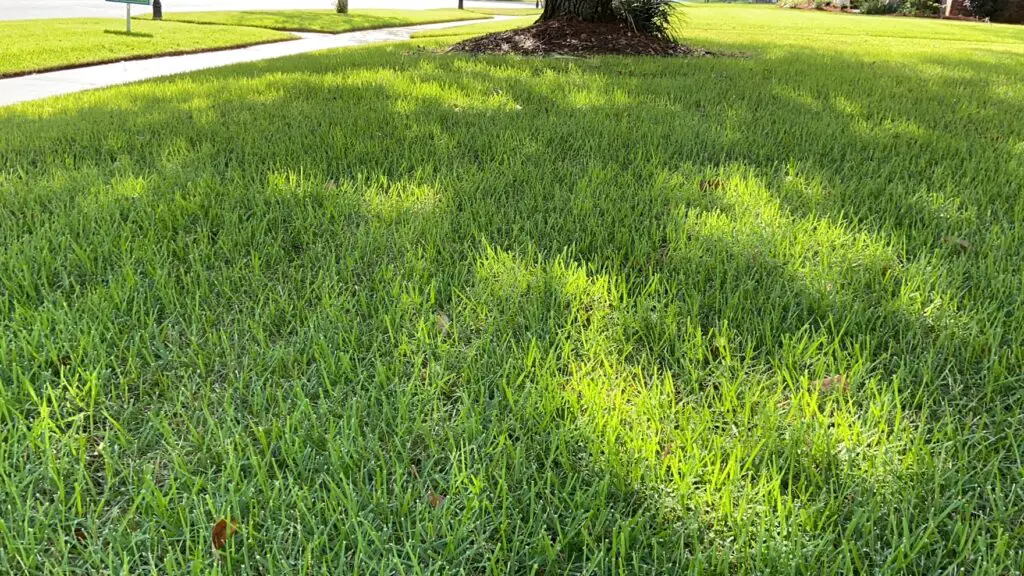
What Kind Of Grass Should You Grow Under Shade Trees?
Looking to grow grass in shaded areas?
Most grasses don’t do well in dense shade or around tree roots and find it hard to get the light and nutrients needed for health.
The tree’s roots compete with grass roots for water and nutrients in the top inches of topsoil.
Shade tolerant species can process energy in low light conditions.
These varieties can produce chlorophyll with minimum sunlight and are extremely efficient at photosynthesis,
Some turf grasses can be grown in filtered light with six hours of dappled light.
To compensate, many people use seed blends to grow grass beneath trees.
Tip: Thin the tree’s canopy to allow more sunlight to pass through. Selectively trim some of the branches to help the turf beneath
Shade-Tolerant Grass Types
Certain cultivars of grass can tolerate low light conditions, meaning they can grow in areas that do not receive direct sunlight.
This is an important requirement for homeowners who have shaded areas in their yard that they still want to maintain a lush, green lawn.
Some of the most common shade-tolerant grasses include:
Cool Season Turfgrasses: Tall Fescue, Kentucky Bluegrass, Ryegrass, Bentgrass.
Warm Season Turfgrasses: St. Augustine grass and Zoysia grass do well in shady areas.
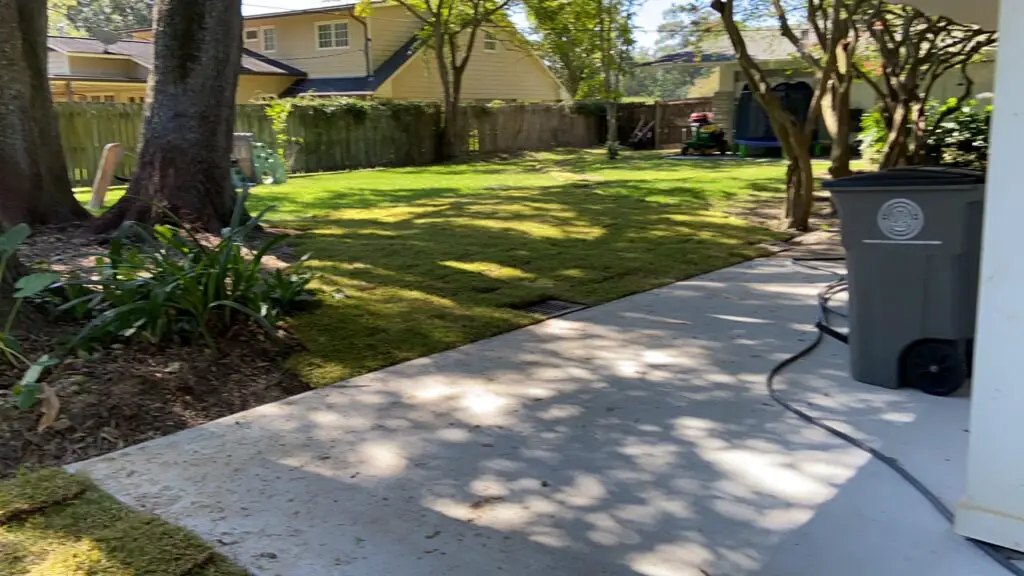
Shade-Tolerant Warm-Season Grasses
Warm-season grasses grow
Augustine grass
Raleigh and Palmetto is reported to be the most tolerant variety of St. Augustine grass.
Zoysia grass
Fine blade zoysia grass is the most shade-tolerant zoysia.
These varieies include Zeon, Geo, Zorro, etc.
Most medium blade zoysia are also fairly tolerant of moderate shade.
Palisades, Empire, Meyer, El Toro, and JaMur zoysia.
Manila zoysiagrass thin blade varieties like zeon, geo, zorro, and cavalier are reported to have slightly better tolerance than Japanese zoysia grasses like Palisades, Empire, Meyer, El Toro, and JaMur zoysia.
Centipede Grass
Centipede grass doesn’t do well in deep shade but can tolerate dapple shade.
Tiffblair, TennTurf, Oaklawn, and Tennessee hardy Centipede were developed to maintain health in shaded spots.
Carpetgrass
Shade Tolerant Bermuda Grass
Bermuda, Buffalograss, and Bahiagrass have the least shade tolerance of the warm season turfgrasses.
They often lack lateral stem growth and development without proper light and like full sun whenever possible.
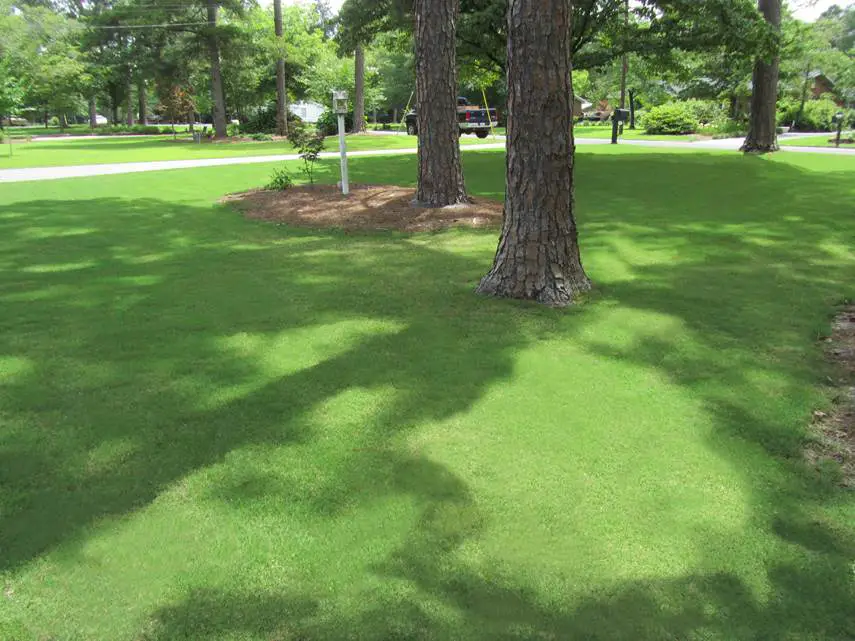
Bermuda grass is warm-season turfgrasses that need full sun to thrive.
Scientists, farmers, and growers have been working on developing species of bermudagrass that can grow in shady areas.
TifGrand, Tiftuf, and Celebration, can be grown in light shade.
TifGrand is the most shade-tolerant variety of Bermudagrass.
It has been bred to withstand up to 50% shade.
Shade-Tolerant Cool-Season Grasses
There are a few types of turf that can tolerate being in shady areas.
Cool-season turfgrasses such as Kentucky bluegrass and tall fescue do best in partial shade.
A few of the most common cold-season shade-tolerant grasses are Fine fescue, Tall Fescue, Kentucky bluegrass, and Rye grass.
Fescue
Fescue is known for its ability to tolerate shady conditions. It’s a popular choice for lawns and gardens alike.
Fine fescue is known for its dark green color.
Tall Fescue
Fescue is also one of the most drought-tolerant grasses, so it is a good choice for areas that do not get a lot of rain.
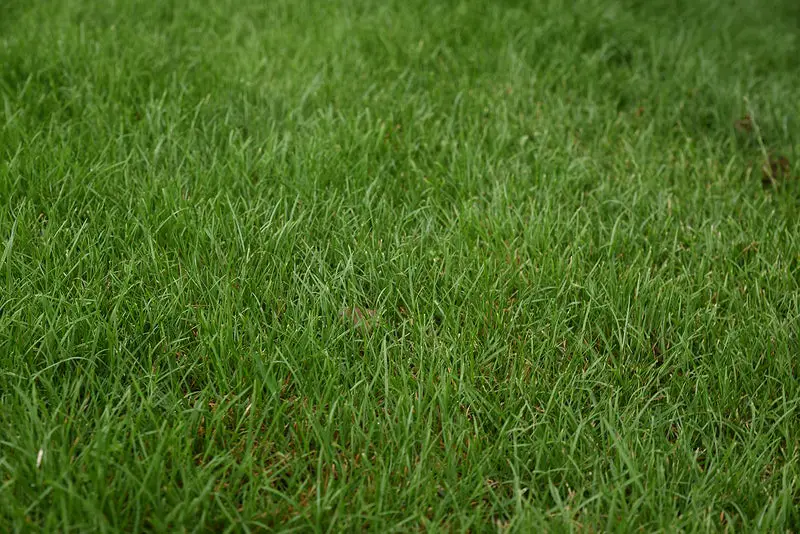
Kentucky bluegrass
Bluegrass is another cool-season grass that does well in shady areas.
It has a light green color and a fine texture. It spreads by sending out runners, so it can eventually cover a large area if left unchecked.
Bluegrass: Bluegrass does well in shaded areas. It’s known for its beautiful blue-green color and lush growth habit.
Ryegrass:
Ryegrass also does well in shady areas. It’s known for its dark green color and dense growth habit.
What Grass Grows In Full Shade?
Not too many plant species can grow in full shade. Even the best-suited shade-loving plants need some sunlight to grow and thrive.
If you want to plant turf seed in shady spots, you need to select a shade grass seed mix.
However, it is hard to grow grass from seed beneath trees.
The best grasses for shade in the South
Louisiana, Texas, Mississippi, Florida, Alabama, Georgia
St. Augustine and Zoysia are the best and grow well in the shade. You can successfully grow Centipede in some shady areas of your lawn, but it does not like deep shade.

The best grasses for shade in the Transition Zones
Transition Zone states like North Carolina, South Carolina, Oklahoma, Missouri, Virginia, Tennessee.
Growing grass in the shade in these states can be done with the right plan for your property.
The best grasses for shade in the North
Lawns in the north are mostly cool season grasses.
Fine fescue, Tall fescue, Kentucky Bluegrass, and Ryegrass are the best turf for shady areas in the northern states.
These thrive in the with reduced light and are easy to maintain with regular lawn care.
Best Grass for Shade & Shaded areas
Consider the location of your property and the quantity of sunlight that reaches your yard during the day.
Your grass will require more heat relief if you live in a hot climate with direct sunshine than if you do in a cooler region with indirect sunlight.
St. Augustine is the best warm season grass for shade.
Tall fescue is the best cool season grass for shady areas of your lawn.
These turfgrass species have elevated tolerance and make a good choice to grow a lawn in the shade.
If you’re looking for grass to grow in shady areas, you’re in luck.
best grass for shade

